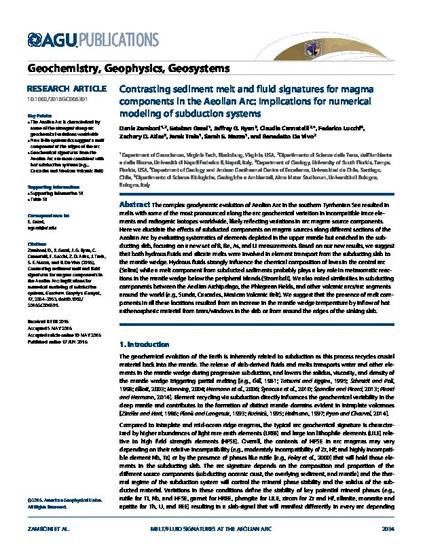
- subduction,
- sediment melt,
- boron,
- beryllium,
- Aeolian Islands
The complex geodynamic evolution of Aeolian Arc in the southern Tyrrhenian Sea resulted in melts with some of the most pronounced along the arc geochemical variation in incompatible trace elements and radiogenic isotopes worldwide, likely reflecting variations in arc magma source components. Here we elucidate the effects of subducted components on magma sources along different sections of the Aeolian Arc by evaluating systematics of elements depleted in the upper mantle but enriched in the subducting slab, focusing on a new set of B, Be, As, and Li measurements. Based on our new results, we suggest that both hydrous fluids and silicate melts were involved in element transport from the subducting slab to the mantle wedge. Hydrous fluids strongly influence the chemical composition of lavas in the central arc (Salina) while a melt component from subducted sediments probably plays a key role in metasomatic reactions in the mantle wedge below the peripheral islands (Stromboli). We also noted similarities in subducting components between the Aeolian Archipelago, the Phlegrean Fields, and other volcanic arcs/arc segments around the world (e.g., Sunda, Cascades, Mexican Volcanic Belt). We suggest that the presence of melt components in all these locations resulted from an increase in the mantle wedge temperature by inflow of hot asthenospheric material from tears/windows in the slab or from around the edges of the sinking slab.
Geochemistry, Geophysics, Geosystems, v. 17, issue 6, p. 2034-2053
© 2016. American Geophysical Union. All Rights Reserved.
Available at: http://works.bepress.com/zachary-atlas/2/